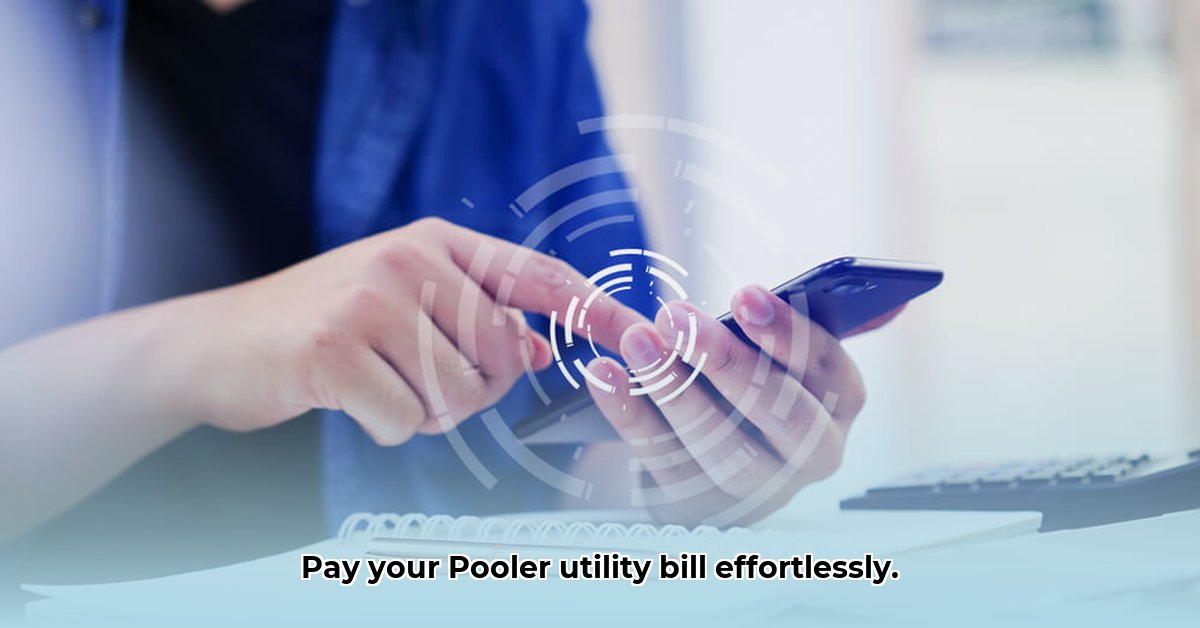
Understanding and Optimizing Pooler, GA Utility Services
This report analyzes the current utility billing system in Pooler, Georgia, identifying areas for improvement to enhance customer experience and operational efficiency. We will examine the strengths and weaknesses of the existing system, focusing on online bill pay, communication strategies, payment options, and overall cost-effectiveness. Our analysis is data-driven and offers actionable recommendations for short-term and long-term improvements.
Key Findings:
- The current online bill pay system is functional but lacks user-friendly features and comprehensive account management capabilities. This limits its effectiveness and convenience for residents.
- Communication methods could be improved by leveraging email and text message alerts for time-sensitive updates, increasing transparency and reducing reliance on mailed notifications.
- Payment fees, particularly the 3.5% convenience charge for phone payments, are a significant concern for residents and may disproportionately affect lower-income households.
Current System Assessment: Strengths and Weaknesses
Pooler's utility billing system currently offers various payment methods – online, phone, and in-person – providing options for residents. However, several weaknesses hinder its optimal performance:
Strengths:
- Multiple payment options cater to diverse customer preferences.
- The online portal provides a basic online payment function.
- Billing statements clearly outline charges for water, sewer, and garbage services.
Weaknesses:
- The online portal lacks advanced features (account management, service requests).
- Communication primarily relies on mailed statements, leading to potential delays and missed information.
- The 3.5% convenience fee for phone payments is considered excessive by some residents.
- Late payment penalties (10% + service interruption) are substantial and could disproportionately impact lower-income households.
Improving Online Bill Pay: A User-Centric Approach
The online bill pay portal needs a significant upgrade to enhance user experience and functionality. A modernized system should include:
- Intuitive Navigation: Simplified design and clear instructions to facilitate ease of use for all residents.
- Comprehensive Account Management: Allow users to view past bills, update contact information, report service issues, and manage payment arrangements all within the online portal.
- Secure Payment Gateway: A robust and secure system to protect sensitive financial information.
- Mobile Optimization: Ensure the portal is fully accessible and functional on all devices, including smartphones and tablets.
By implementing these enhancements, the online bill pay system can become a central hub for managing all utility-related needs, improving customer satisfaction and operational efficiency.
Enhancing Communication: Proactive and Timely Updates
Effective communication is vital for preventing late payments and service disruptions. Improved communication strategies should include:
- Multi-Channel Approach: Combine email and text message alerts with mailed statements to ensure timely delivery of important information.
- Personalized Notifications: Tailor notifications based on individual account activity and preferences.
- Proactive Service Alerts: Notify residents of potential service disruptions or planned maintenance in advance.
- Clear and Concise Messaging: Use easily understandable language and avoid technical jargon.
This multi-faceted approach will drastically improve communication efficiency and resident engagement, ensuring timely payments and proactively addressing potential service issues.
Optimizing Payment Options and Fees
The current payment fee structure should be reviewed to ensure fairness and affordability:
- Phone Payment Fee Reduction: Lower or eliminate the 3.5% convenience fee for phone payments, addressing affordability concerns. Alternative low-cost options should be explored.
- Flexible Payment Plans: Offer flexible payment plans to help residents facing financial difficulties manage their utility bills.
- Automated Payment Options: Integrate automated payment options (autopay) to improve payment consistency and reduce late payments.
These changes will improve access to affordable and convenient payment options, benefiting all residents.
Actionable Recommendations: A Phased Approach
The improvements outlined above should be implemented in phases, focusing on short-term and long-term goals:
Phase 1 (0-1 Year):
- Revamp the Online Portal: Implement the improvements outlined above within one year.
- Enhance Communication Channels: Transition to a multi-channel notification system, including email and text messages, within six months.
- Review Payment Fee Structure: Conduct a thorough review of the payment fee structure, prioritizing the reduction or elimination of the phone payment fee.
Phase 2 (1-3 Years):
- Develop a Mobile App: Launch a user-friendly mobile app for accessing account information and payment options.
- Implement Automated Payment: Introduce automated payment options (autopay) to improve payment consistency.
- Explore Flexible Payment Plans: Develop and implement flexible payment plans for residents struggling financially.
Phase 3 (3-5 Years):
- Modernize Billing System: Invest in advanced billing software to improve efficiency and accuracy.
- Implement Predictive Analytics: Utilize data analytics to anticipate and address potential service disruptions more effectively.
By implementing these recommendations, the City of Pooler can transform its utility billing system into a user-friendly, efficient, and cost-effective model that enhances customer satisfaction and improves the overall quality of life for residents. Continuous monitoring and feedback mechanisms should be employed to ensure the system’s ongoing optimization and adaptation to evolving needs.